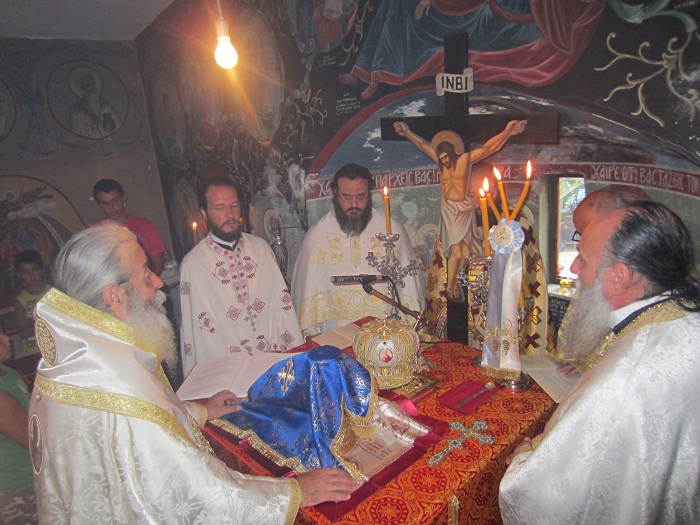The deacon then takes the Diskos while the priest takes the Chalice, and reverently holding them at head-level, they carry them in a slow and solemn procession through the nave of the church. They go surrounded by acolytes with candles, icons, incense, liturgical fans (which are in the likeness of the Seraphim), and the cross, until they reach the Royal Doors in front of the Iconostasis. The procession is normally accompanied by the singing of the Cherubic Hymn.
The procession of the holy gifts signifies Christ proceeding to the mystical sacrifice, recalling Palm Sunday when the Lord rode into the Holy City on a donkey escorted by a jubilant crowd. In the same vein, it can also signify Jesus’ final journey from Galilee to Jerusalem, again, where He was to be sacrificed.
During the Great Entrance, the Faithful must bow their heads before the priest and entreat Christ to remember them in His kingdom. The priest (or deacon) says in a loud voice: “May the Lord God remember all of you in His kingdom, always, now and ever, and to the ages of ages.”
Then the priest prays for the bishop, the president of the country, and the living who have offered the oblation. After recalling the names of those who have departed this life, the priest then enters the sanctuary through the Royal Doors and places the holy gifts upon the Holy Table.
The priest then quietly mentions the burial of Christ. He describes how Joseph of Arimathea took down the body from the cross, wrapped it in clean linen -- anointing it with spices and ointment -- and then, with Nicodemus, how Joseph placed the body of the Lord in a new tomb hewn out of a rock. The altar is an image of the holy tomb in which the pure body of Jesus was placed. Thus the placing of the gifts on the Holy Table after the Great Entrance is seen by many as a picture of the burial of Christ.

At this point the priest chants a solemn hymn: “O Christ, You were in the grave with Your Body, but as God You were in Hades with Your soul; in Paradise with the thief, and on the throne with the Father and the Spirit, filling all things, O Incomprehensible One.”
The priest takes the covers from the Diskos
and the Chalice and places them on the Holy Table, on the corners of the
antimension. He then censes the aer, placing it over the Diskos and the
Chalice. He censes them three times, saying quietly the last verse of Psalm
51:
“Then they will offer bulls on Your altar.” (Three times)
Meanwhile the people complete the singing of the Cherubic Hymn.
================================
148 The controversy involved the learned deacon Soterichus Panteugenes, deacons Michael of Thessalonica and Nicephorus Basilaces (both of whom served in the Hagia Sophia and taught theology at the patriarchal school), and the metropolitan of Dyrrachim, Eustathius, who was at the time Patriarch-elect of Antioch. 149 Psalm 134:2.
150 Psalm 47:5.